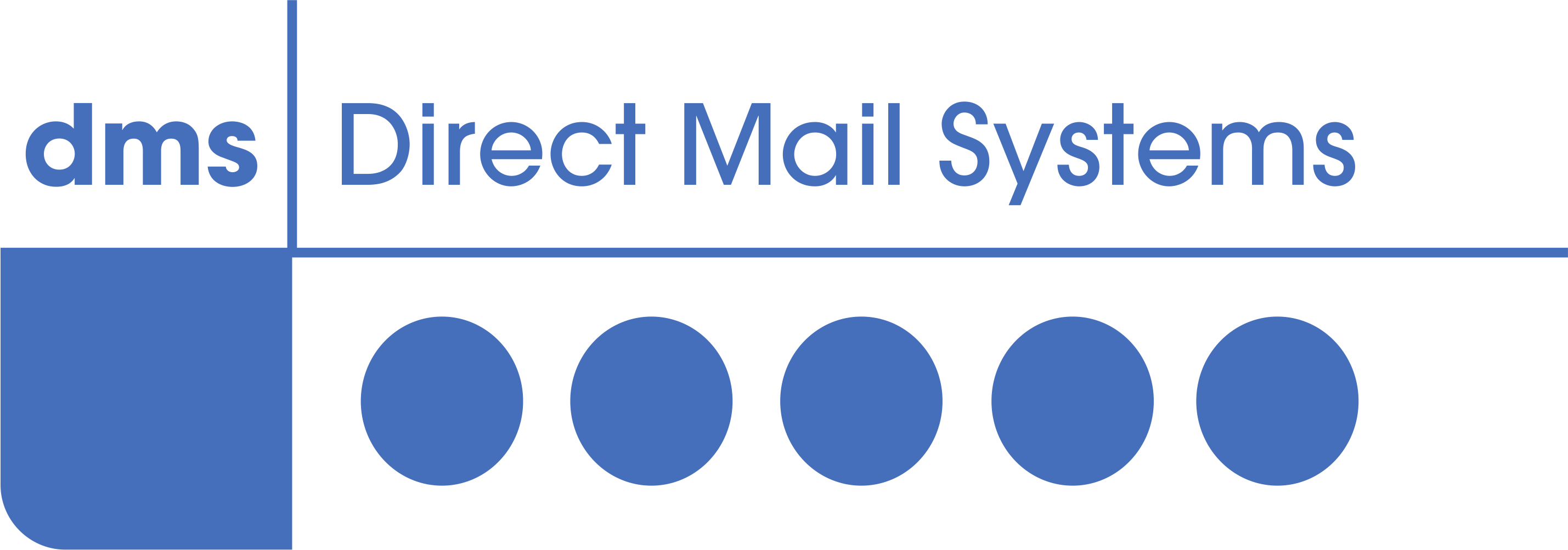In a world overwhelmed by digital noise, marketers are asking: Direct Mail vs Email: Which channel wins in 2025? With inboxes clogged and attention spans shrinking, can traditional direct mail reclaim ground, or will email maintain its digital dominance? In this post, we compare the strengths and limitations of direct mail and email marketing in 2025, and explore how we can help you use both channels smarter.
- Why the Debate Still Matters in 2025
- Comparing Email and Direct Mail in 2025
- Strengths & Weaknesses
- When to Use Email, When to Use Direct Mail… And When to Use Both
- Trends That Will Shape the Future of Direct Mail & Email
- So, Which Channel Wins in 2025?
- Work With Direct Mailing Systems On Your Next Campaign
Why the Debate Still Matters in 2025
We live in an era of “digital fatigue”, as consumers are bombarded by email, social ads, pop-ups, push notifications, and more. Email open rates are under pressure, spam filters are stricter, and trust in digital ads is waning.
Meanwhile, direct mail is quietly resurging, with direct mail response rates are estimated at around 4.4% compared to 0.12% for email. However, there are pros and cons to each channel, and when marketers in 2025 ask which is better, the real answer is: it depends! Depending on your objectives and marketing goals, one may reign supreme for you, or you may benefit from a hybrid approach. Keep reading as we go through the pros and cons of each as we compare email vs direct mail.
Comparing Email and Direct Mail in 2025
Open & Engagement Rates
With email, typical open rates vary by industry but tend to hover between 20-30%, sometimes less. It’s also important to understand that “opens” don’t always translate to meaningful engagement!
On the other hand, direct mail tends to be opened at much higher rates. Some studies suggest mail pieces get opened or at least viewed 80–90% of the time under ideal conditions. Because direct mail is tangible, recipients often handle it multiple times, which boosts brand recall and engagement beyond a one-off click.
Response & Conversion Rates
Direct mail tends to outperform email in response rates. For example, in the UK direct mail is often cited at 4–9% response vs email’s ~0.1%. In addition, integrated campaigns combining direct mail and email often achieve a higher lift, some even reported as +27%!
Return on Investment (ROI)
While direct mail has higher production, printing and postage costs, its stronger engagement does offset some of that.
Some data suggests that the average ROI from direct mail campaigns is 29:1, meaning for every £1 spent, £29 can be expected in return in revenue. That said, email remains much cheaper per send, so for mass, low-value communications it still often wins on cost efficiency.
Cost per Acquisition & Efficiency
Email campaigns generally cost less per acquisition too, but cost must be weighed against response quality and lifetime value. This means that if direct mail yields more qualified leads, the extra cost may be justifiable.
Longevity & Brand Recall
One major advantage of direct mail is longevity. Mail often lingers in homes or offices for days or weeks, offering repeated exposure. Emails, by contrast, are often deleted, ignored or buried within seconds or minutes. Because of this, direct mail often delivers higher brand recall and more sustained value.
Strengths & Weaknesses
Strengths of Direct Mail
- Tangible
- Stands out in inbox-crowded world
- High open/engagement
- Longer dwell time
- Great for brand recall
- Effective for high-value prospects
Strengths of Email
- Extremely cost-efficient
- Instant delivery
- Rich analytics (opens, clicks, segmentation)
Weaknesses of Direct Mail
- Higher cost (printing + postage)
- Longer lead time
- Fewer opportunities for instant analytics
- Needs accurate data & targeting
Weaknesses of Email
- Low open/click rates
Spam filters / deliverability issues - Digital fatigue
- Crowded inboxes
When to Use Email, When to Use Direct Mail… And When to Use Both
Best Use Cases for Email
- Regular newsletters, customer updates, transactional messages
- High volume, low cost communications
Automated drip/triggered campaigns (e.g. cart abandonment, welcome series) - Situations needing real-time updates or immediate changes
Best Use Cases for Direct Mail
- High value or high touch campaigns (e.g. premium offers, renewals, upsell)
- Reaching decision-makers or people less responsive to digital
- When you want physical impact (e.g. postcards, brochures, dimensional mailers)
- As a differentiator in saturated markets
Hybrid Strategy: The Real Winner in 2025
It’s rarely “either/or.” The strongest campaigns in 2025 will be integrated and used strategically together for a collaborative approach to drive results. For example:
- Send a direct mail piece first, then follow up via email (and vice versa)
- Use QR codes or personalised URLs in mail to drive digital interactions
- Use mail to re-engage lapsed email contacts
- Track and merge analytics across both channels
Studies have shown that direct mail and email campaigns, when used in tandem they can outperform single-channel ones!
Trends That Will Shape the Future of Direct Mail & Email
Personalisation & Variable Data Mail
Advances in printing and data make hyper-personalised direct mail more accessible. Meaning tailored offers, dynamic visuals, and unique customer insights are no longer just for emails.
Automation, API & On-Demand Print
Modern direct mail platforms can integrate with CRM and marketing systems, enabling automated mail sends tied to digital triggers. This blurs the line between digital and physical channels.
Sustainability & Eco-Friendly Materials
Consumers increasingly expect sustainable marketing and by using recycled materials, eco inks, and carbon offset mailings, brands can improve brand image and acceptance.
Privacy & Data Regulation
Stricter GDPR compliance and sensitivity around email tracking is pushing marketers to rethink data use. Direct mail is often viewed as less invasive, though data hygiene and opt-in remain critical.
Enhancements: AR, QR Codes, NFC
Printed mail offers interactive opportunities like QR codes, augmented reality, and NFC tags, bridging print and digital experiences seamlessly.
So, Which Channel Wins in 2025?
So there you have it: Direct Mail vs Email: Which channel wins in 2025? The answer is: neither wins outright, the winner is your strategy. Use email for its speed and affordability; use direct mail for its impact and memorability, and blend them for best results.
Work With Direct Mailing Systems On Your Next Campaign
If you’re curious how direct mail could elevate your marketing mix in 2025, or want help combining mail and digital channels effectively, get in touch with Direct Mail Systems today.
Contact us by clicking here to find out more about solutions, case studies, and how we can support your next direct mail campaign today.





